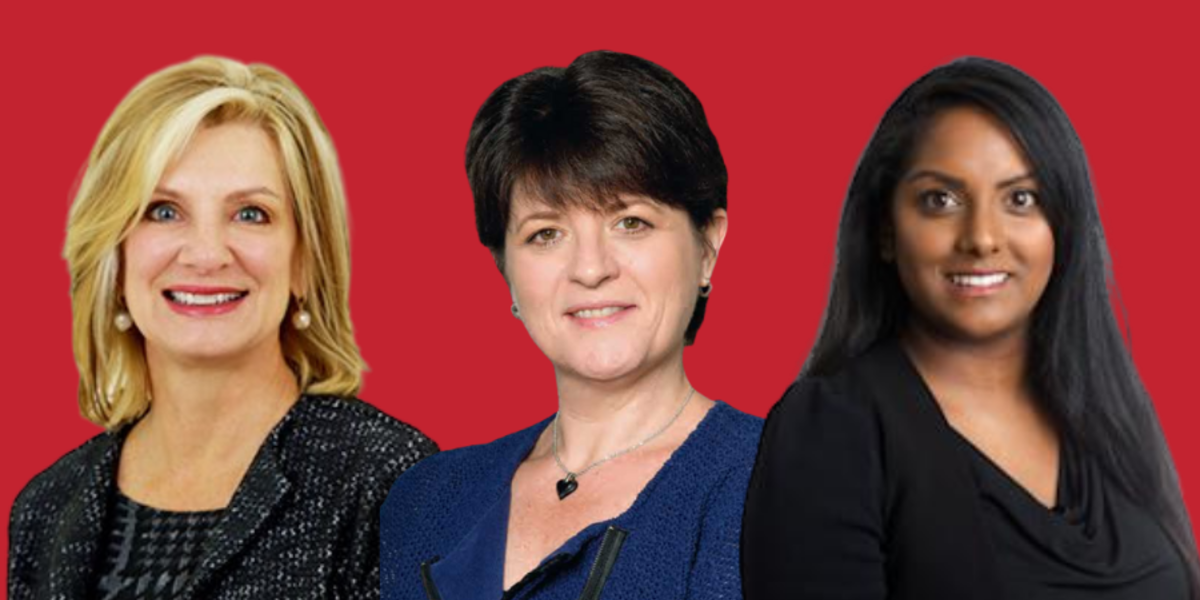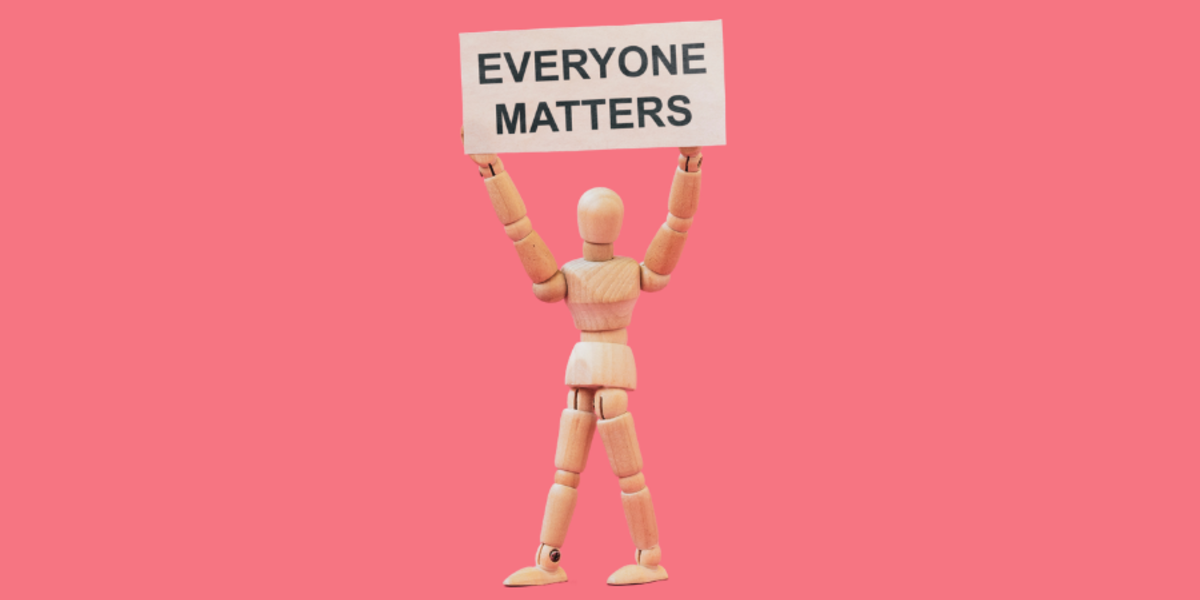-
.png)
Three Aon Colleagues Recognized As HERoes Women Role Models By INvolve
Jennifer Bell, Julie Page and Sabrina Pyneeandy celebrated for championing women in business and driving gender diversity in the workplaceA leading global professional services firm providing a broad range of risk, retirement and health solutions, is proud to announce that three colleagues were named to the HERoes Women Role Model Lists for 2021.Jennifer Bell, CEO, North America, and Julie Page, CEO, United Kingdom (UK), were both named to the HERoes 100 Women Executives List. This marks the first time an Aon leader has appeared on the list. Bell is co-chair of Aon's Global Inclusive Leadership Council (GILC), a group of 20 colleagues who champion inclusion and diversity (I&D) efforts across the firm. In this role, she regularly reports to the Inclusion & Diversity Sub-Committee of the Aon plc Board. In addition to advocating for representation at the leadership level, Bell has been an active mentor to dozens of colleagues and clients, many who are women."As the beneficiary of allies who helped further my career, I've been passionate and committed to equity—especially in my efforts to diversify talent with hiring and promoting," Bell said. "As a result of the incredible work being done by Aon's Global Inclusive Leadership Council, I'm proud of the impact we've made, and I am committed to driving action and impact for equity and inclusion across the firm."Page is a member of the GILC and Aon's UK Inclusive Leadership Council, ensuring alignment with the GILC to accelerate regional action. Throughout her career, she has worked to support gender diversity and women's inclusion both at Aon and in the broader insurance industry. Page currently serves as the President of the Chartered Insurance Institute and is a committee member for Inclusion@Lloyds. She was also former chair for the Dive In Festival committee, the festival for diversity and inclusion in insurance."I am a strong believer in the importance of a diverse workforce, but I know there is more work to be done," said Page. "I'm committed to championing all women and challenging myself and my team to increase our cultural competence and have difficult conversations to effect real change across our firm and the industry."Sabrina Pyneeandy, Project Manager in the UK, was named to the HERoes 100 Women Future Leaders list. She is co-chair of both the Gender Inclusion Network and Aon's UK Gender IQ Business Resource Group. Pyneeandy has played a pivotal role in Aon UK's mission to strive for gender parity by running events for International Women's Day, International Men's Day and Non-Binary Day. As well as developing key I&D goals and initiatives aligned to the business line she supports, Pyneeandy has been working with Aon's People organization on women's issues, particularly women's safety."Creating a culture were all Aon colleagues feel empowered to be their authentic selves is only possible when we all work together," said Lisa Stevens, Aon's Chief People Officer. "I am so proud and thankful for Jennifer, Julie and Sabrina's efforts to drive greater gender diversity both at Aon and across our industry." The firm is committed to furthering its I&D priorities to continue to build a resilient workforce and provide opportunities for colleagues through meaningful actions. To support this work, the GILC provides advice, recommendations and accountability for Aon's inclusion and diversity strategy and related actions, focused on five main areas:Recruiting: Driving inclusive and equitable hiring practicesEducation: Improving cultural competence and expanding awarenessRepresentation: Ensuring the workforce is reflective of the communities in which colleagues live and workPromotion: Increasing development opportunities for all colleaguesEnvironmental, Social and Governance: Ensuring alignment of policies, brand and purpose for environmental, social and governance issuesThe annual HERoes lists showcase leaders who are championing women in business and driving change for gender diversity in the workplace. The HERoes 100 Women Executives List spotlights senior women leading by example and driving change to increase gender diversity in the workplace, while the HERoes 100 Future Leaders List highlights inspirational women who are not yet senior leaders in an organization but are making a significant contribution to gender diversity at work. To learn more about the lists, visit this page. About AonAon plc (NYSE: AON) is a leading global professional services firm providing a broad range of risk, retirement and health solutions. Our 50,000 colleagues in 120 countries empower results for clients by using proprietary data and analytics to deliver insights that reduce volatility and improve performance.The original article was published here.
-
.png)
Diversity, Equity and Inclusion: Building a Better Business
The past year has seen the focus on equality become a worldwide issue. Around the world, businesses, institutions and governments are being scrutinized on their approach to diversity, equity and inclusion (DEI).And this level of investigation is not just coming from activists. It’s become increasingly common for employees to use DEI as criteria for selecting where they work (and how long they stay). Plus, stakeholders are increasingly demanding organizational transparency around their policies on building a diverse and inclusive culture.As a result, employers are boosting their focus on DEI. A recent Aon survey found that three out of four organizations planning for the future of work are focusing on DEI. Getting where they want to go, however, requires a clear strategy.A successful DEI strategy involves an organization-wide effort, with a commitment from the top. It also demands effective communication to stakeholders inside and outside the organization of any DEI goals and progress toward meeting them.For publicly traded businesses, there’s growing pressure to demonstrate DEI progress from investors taking an environment, social and governance (ESG) focus or from regulatory disclosure requirements. But, for any business, strong DEI practices can build stronger organizations, while reducing possible litigation, brand and reputation risks. They can also make businesses more attractive to potential recruits who are scrutinizing possible employers’ DEI policies in practice.“DEI can be an opportunity since the labor market is super competitive,” says Laura Wanlass, partner and head of Global Corporate Governance & ESG Advisory Consulting at Aon. “The more strategic you can be on your diversity, equity and inclusion initiatives, the more compelling your story is going to be in terms of mitigating people risk, and probably being a more innovative organization.”In DepthFor a DEI effort to be effective, it must become part of an organization’s broader human capital management strategy and become integrated into all talent attraction, development, and retention activities.The first step for any organization is evaluating where it is in terms of DEI and where it wants to go. For organizations just beginning to collect data on its workplace culture, internal and external benchmarking helps them understand where they are compared to peers and in setting targets.Then, moving forward, management must communicate its DEI goals and the organization’s progress to employees, investors, clients, customers and all other relevant stakeholders.“This process is forcing companies to take stock of what they’re doing, where they want to go, and how they’re communicating it,” says Wanlass.Ultimately, a successful DEI strategy can help a company in a number of ways, including improving the ability to hire and retain talent, attract more customers, reduce legal exposures and reputation and brand risks, improve workforce engagement and enhance investor appeal.Setting the Tone From the TopUltimately, an organization’s board of directors should set its DEI strategy. It is also up to the board to then take an enterprise-wide approach to implementing that strategy.“The lightbulb moment is when organizations recognize that the value and opportunity of DEI will be replicated across business functions,” says Marc Spurling, head of Enterprise Risk & Resilience and Liability Claims Analytics at Aon.And it’s not just a top-down strategy: an organization’s DEI approach should also be applied to the board.“Boards need to be the visible role model and really drive this,” says Avneet Kaur, head of Wellbeing Solutions, EMEA, at Aon.The board must be kept well-informed about the organization’s DEI progress. That way, it can act as a sort of “internal activist” to promote the efforts, Wanlass says. The board should create clarity around goals, who’s responsible for meeting them and the metrics that will be used to gauge progress.As organizations work to meet their DEI goals, breaking down silos and sharing information across the organization is essential to effectively communicating progress to external stakeholders.Opportunities in DEIBeyond a simple requirement to be met, effective DEI programs can be an opportunity for organizations.“It’s easy to go down the path of, ‘How deficient are we in DEI,’” says Wanlass. “That’s normal, because you have to take stock and then step back and think, `How do I use this as a strategic lever to really be innovative as an organization? How can we use DEI to achieve that?’”Such a focus at the C-suite and board level can better position organizations to attract top talent in a competitive labor market.Meanwhile, disclosure requirements facing publicly traded companies in many jurisdictions have pushed them a bit further along the DEI road than other organizations. Those requirements have also given them an advantage in gathering data that is useful in measuring progress toward meeting goals and identifying areas that might require extra attention.“There are certain sectors where traditional gender balance has been less optimal, and those types of organizations are starting to think about how they can create strategies to attract people from different diverse backgrounds into the organization or sector,” says Spurling.A DEI Approach to WellbeingApplying a DEI focus to employee health and wellbeing programs can help ensure that they’re effectively supporting the varied needs of employees in a diverse workforce.For example, women tend to approach investing and financial security issues differently than men, so financial wellbeing and education programs should be crafted to address those differences. In another example, benefits programs geared toward families with children might not adequately address the needs of employees without children caring for aging parents.“Employers need to look at their employee base and really consider, ‘Are my benefits actually matching the needs of all my employees,’” says Kaur. “You have to listen to your employees, but you also have to listen to changes in market demand. Have an open dialogue with employees, understand their needs and think about what you might be missing. Are you trying to provide a one-size-fits-all solution to all your employees without considering their differing needs?”There Are No Shortcuts to DEIAs employers craft and implement DEI strategies, it’s important to recognize the effort involves a journey, and not to expect overnight success.“It’s not the sort of thing in which you make a decision today, and tomorrow you apply it, and then everything is fantastic,” says Kaur. “It’s a process, and it will take time. So, you have to plan. It’s a three- or five-year road map.”Over time, the employer can study metrics to determine progress and how the DEI efforts are working with different groups of the employee population.“This is key for boards in terms of starting to think about longer-term plans,” says Spurling. “They have an opportunity to recognize the value of DEI to the business, its employees and shareholders and take a long-term view in developing the DEI strategy.”The original article was published here.
Search by
Search by topic
